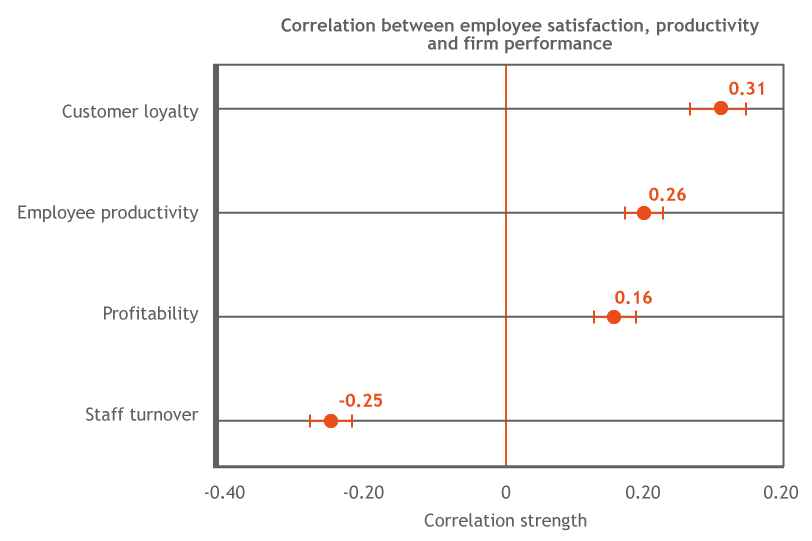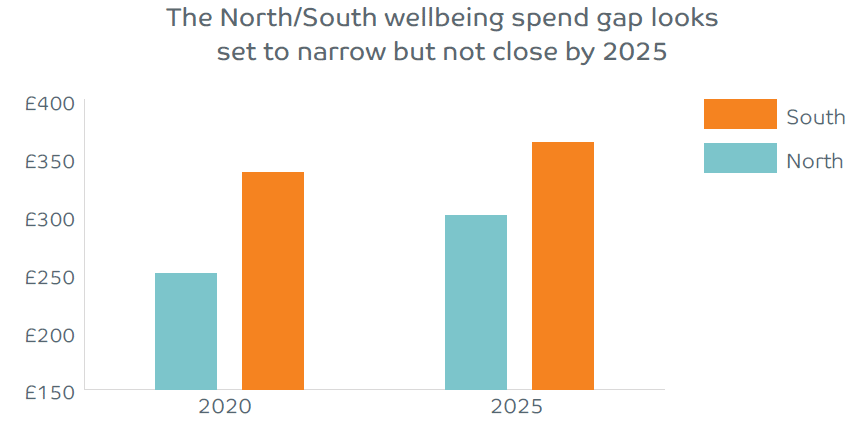Our latest report, Coping after Covid, explores the findings of our latest research into the business impact of employee wellbeing during the coronavirus pandemic.
As the Government embarks on the path out of national lockdown measures, business leaders across the country are refocusing their efforts to ensure their performance – and their people – can return to the workplace at their best.
While wellbeing programmes are often touted as a way to increase employee satisfaction and reduce absences, the report uncovers a clear link between wellbeing and performance. With the right investment, wellbeing has the potential to boost the English economy by as much as £61bn by 2025.
The wellbeing-productivity link
Regional productivity is affected by a whole range of economic factors, but wellbeing is one area where individual organisations can take control to improve the health of their people and drive performance. Studies show that businesses that invest in wellbeing are rewarded with a happier, more productive workforce.
A 2019 study by LSE’s Centre for Economic Performance found a correlation between employee wellbeing, productivity and firm performance across all regions and industries.

The meta-analysis of 339 independent studies included the wellbeing and productivity of 1,882,131 employees and the performance of 82,248 businesses and found a consistent link between wellbeing and productivity. Simply put: happier workers work better.
Wellbeing programmes optimise performance
Our survey of 1,600 employees and HR professionals found a similar link. We asked HR leaders about their wellbeing programmes, wellbeing spend and employee productivity throughout the pandemic.

In organisations with a wellbeing programme in place, 43% of HR managers rated employee productivity as ‘very good’. This figure fell to 18% in organisations with no wellbeing programme. Employees were even less optimistic, with almost a quarter (24%) across all organisations feeling that productivity is poor.
With many HR teams working remotely and employees experiencing constant change, investing in wellbeing is a tried and tested way to create a pillar of support and help take productivity from ‘good’ to ‘great’. The end of lockdown will introduce new uncertainties, but leaders who are backed by a robust wellbeing plan will be able to help their employees transition into post-lockdown life while performing at their best.
The North-South wellbeing spend gap
Our survey also explored productivity and wellbeing spend across the English regions. Businesses in the North of England spend an estimated 17% less on employee wellbeing per head than the South. This coincides with an 8% drop in good mental health.
This spend gap is projected to narrow, but not close, over the next five years. By 2025, spend per head in the North is forecast to rise from £250 to £337, and from £300 to £363 in the South.

Increased wellbeing spend has a notable impact on the wider economy, making it a vital component of post-Covid business recovery. If businesses maximise their wellbeing spend, the increased output could add an additional £13bn to the Northern economy by 2025.
While this increase in spend cannot close the gap on its own, it will be a vital mechanism for driving higher productivity – especially in the North – as the country emerges from the pandemic.
Why motivations matter
So what wellbeing spend are businesses planning? Our survey also asked HR leaders about their motivations for wellbeing investment and how much they expect to spend in the coming year. The majority of businesses upped their spend due to the pandemic, but only around a third (36%) expect it to increase further in 2021.
The organisations most likely to increase their spend are those motivated by morale and culture change. While the link between wellbeing and company performance is clear, organisations citing commercial drivers such as performance and productivity tend to predict a decrease in planned spend.
In fact, these businesses could see a real return on investment – as well as a happier workforce – if they continued to prioritise their wellbeing spend as they did during 2020. Our research found that 84% of HR leaders believe wellbeing is becoming more important and 24% of employees are looking for more support. As we begin to ease out of lockdown, employee health will remain high on the corporate agenda. If organisations want to boost performance in the post-pandemic workplace, wellbeing is a great place to start.
For a detailed analysis of wellbeing’s impact on performance, including advice for making the case for investment in your organisation, download our free Coping after Covid report.